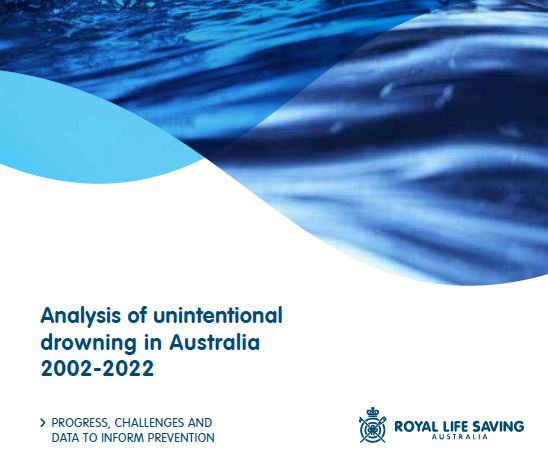Published 21 September 2023
New research showing drowning rates in Australia have dropped by 26 per cent over the past 20 years demonstrates the value of prevention efforts, water safety experts said.
The Analysis of Unintentional Drowning in Australia 2002-2022 report found 5,692 people lost their lives to drowning in Australia in the 20-year period.
The research conducted by the Royal Life Saving Society – Australia analysed unintentional drowning data from the National Fatal Drowning Database for all states and territories and showed encouraging progress on reducing deaths.
The biggest gains in drowning prevention were in the 0–4 age group, which recorded a 59 per cent decrease in the rate of drowning.
Royal Life Saving’s Senior Research and Policy Officer and report author, Lauren Miller said just over half of all drowning deaths in the 0-4 age group occurred in swimming pools.
“There are still too many young children drowning every year. While we are relieved to see a decline in drowning deaths over the past two decades there is still more to be done,” Ms Miller said.
“The introduction of pool fencing legislation across Australia and community awareness programs focusing on supervision helped to reduce drowning deaths in this age group.
“There was also a significant reduction in drowning rates for children aged 5-9 years old, where drowning rates dropped by 48 per cent. Swimming and water safety education has been key to reducing drowning deaths in the school-aged groups of 5-9 and 10-14 years old.
“Swimming pools, lakes and dams were the locations where drowning in 5–14-year-olds most frequently occurred.”
The drowning rate per 100,000 people aged 65 to 74 years decreased slightly, however the number of drowning deaths increased by 58 per cent. As Australia’s population is aging, a growing number of older adults are swimming and recreating around water later in life.
We also see increased drowning due to falls into swimming pools or drowning in bathtubs, likely due to other medical conditions.
Royal Life Saving Society – Australia Chief Executive Officer Justin Scarr said drowning in older age groups is of particular concern.
“The increase in fatal drowning incidents for Australians aged 65 to 74 years represents a growing challenge for drowning prevention,” Mr Scarr said.
“These results reinforce the need for more prioritised interventions, and commitment to greater funding of awareness campaigns, particularly around the risks posed by swimming while using some pharmaceutical medications and swimming alone, or in unpatrolled areas.”
Changes to population size and demographics, climate change, the long-term effects of the COVID-19 pandemic and growing recreational use of waterways are all significant challenges to drowning prevention which must be countered if we are to maintain the progress made over the past two decades.
The Australian Water Safety Council is working towards a 50 per cent reduction in drowning deaths across all age groups and locations by 2030, as detailed in the Australian Water Safety Strategy 2030.

